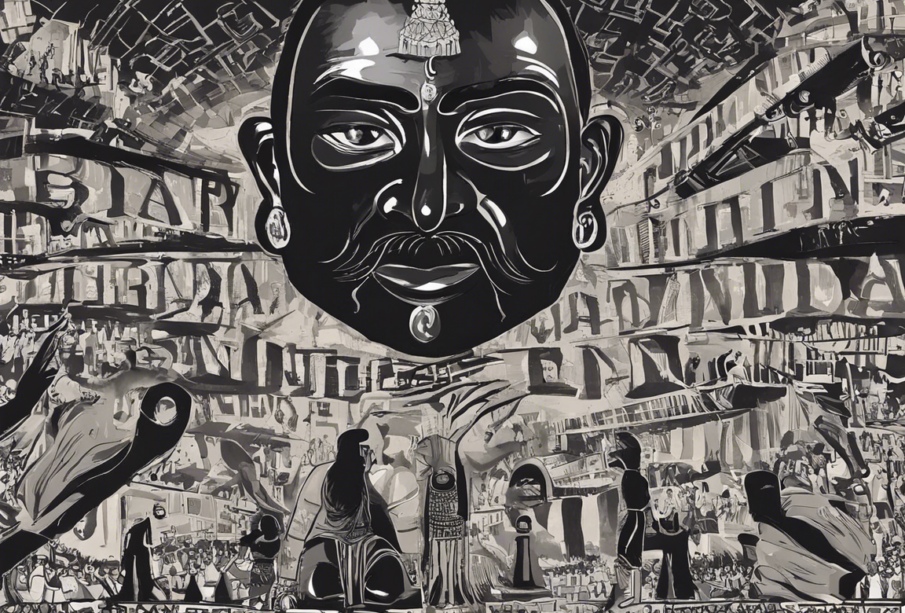Remembering the Black Day of India: A Historic Analysis

Introduction
On the 6th of December, 1992, India witnessed one of the darkest days in its history – the demolition of the Babri Masjid in Ayodhya, Uttar Pradesh. The destruction of the 16th-century mosque by Hindu nationalists sparked nationwide riots, leading to communal violence and claiming thousands of lives. This event not only highlighted deep-rooted religious tensions but also challenged the secular fabric of the nation. This article delves into the historical background, events leading up to the demolition, its aftermath, and the repercussions that continue to shape India’s social and political landscape.
Historical Background
To understand the significance of the Babri Masjid demolition, it is essential to delve into the historical context. Ayodhya, a small town in Uttar Pradesh, is believed to be the birthplace of Lord Rama, a revered deity in Hinduism. The Babri Masjid, built by Mughal Emperor Babur in 1528, was located in Ayodhya on a site that some Hindus claim to be the birthplace of Lord Rama. This led to a longstanding dispute between Hindu and Muslim communities over ownership of the site.
The Ram Janmabhoomi Movement
In the 1980s, the Vishva Hindu Parishad (VHP), a Hindu nationalist organization, launched the Ram Janmabhoomi movement, advocating for the construction of a Ram temple at the disputed site in Ayodhya. The movement gained momentum, leading to widespread communal tensions and riots. The Bharatiya Janata Party (BJP), a prominent political party, aligned itself with the VHP and supported the construction of the temple, making it a central plank of its political agenda.
Events Leading to the Demolition
The Babri Masjid demolition on December 6, 1992, was preceded by a series of events that heightened communal tensions. In September 1990, the VHP laid the foundation stone for the construction of the Ram temple at the disputed site, despite a court order prohibiting any religious activity. This act was followed by nationwide protests and violence.
On December 6, 1992, a large mob of kar sevaks (Hindu volunteers) gathered at the site in Ayodhya and demolished the Babri Masjid with hammers and axes, as security forces stood by without intervening effectively. The incident led to riots across India, resulting in the loss of thousands of lives, predominantly Muslims.
Aftermath of the Demolition
The Babri Masjid demolition had far-reaching consequences that continue to impact Indian society and politics. The event polarized communities along religious lines, deepening mistrust and animosity between Hindus and Muslims. The ensuing riots and violence scarred the nation’s collective memory and highlighted the fragility of India’s secular ethos.
Legal Proceedings and Ayodhya Verdict
In the aftermath of the demolition, multiple cases were filed regarding the ownership of the disputed site. The most notable among them was the title suit filed by the Sunni Waqf Board, representing the Muslim community. After years of legal battles, the Supreme Court of India delivered a verdict in November 2019, awarding the disputed site to the Hindu parties for the construction of a Ram temple. The court also directed the government to allocate an alternative five-acre plot to the Sunni Waqf Board for the construction of a mosque.
Repercussions and Communal Harmony
The Babri Masjid demolition was a watershed moment in Indian history, influencing politics, society, and interfaith relations. It exposed deep-seated communal fault lines and raised questions about religious tolerance and secularism in a diverse nation like India. The incident also served as a catalyst for the rise of Hindu nationalism and identity politics in the country.
Challenges to Communal Harmony
Despite efforts to promote communal harmony and reconciliation in the aftermath of the Babri Masjid demolition, India continues to grapple with religious tensions and prejudices. Incidents of communal violence, hate speech, and religious polarization underscore the challenges of fostering a pluralistic and inclusive society. The scars of the past are a reminder of the imperative to work towards unity, understanding, and mutual respect among all communities.
Lessons Learnt and the Way Forward
The Babri Masjid demolition stands as a somber reminder of the consequences of religious intolerance, bigotry, and divisive politics. It underscores the need for promoting dialogue, empathy, and respect for diversity in a multicultural society like India. Learning from the mistakes of the past, it is essential to uphold the principles of secularism, justice, and equality for all citizens, regardless of their faith or beliefs.
Conclusion
The Babri Masjid demolition remains a blot on India’s democratic fabric and a painful chapter in its history. The incident serves as a cautionary tale against the dangers of religious extremism, intolerance, and communal violence. As India moves forward, it is crucial to confront the legacies of the past, heal old wounds, and strive towards a future where harmony, peace, and coexistence prevail. Only by embracing unity in diversity can India truly live up to its potential as a vibrant and inclusive democracy.
FAQs
- What was the significance of the Babri Masjid in Ayodhya?
-
The Babri Masjid, built in the 16th century, was located on a site claimed by some Hindus to be the birthplace of Lord Rama, a revered deity in Hinduism. The disputed site became a focal point of religious tensions between Hindu and Muslim communities.
-
What were the consequences of the Babri Masjid demolition?
-
The demolition of the Babri Masjid in 1992 led to nationwide riots, communal violence, and the loss of thousands of lives. It polarized communities along religious lines and raised questions about secularism and religious tolerance in India.
-
How did the legal proceedings unfold post the Babri Masjid demolition?
-
After the demolition, multiple court cases were filed regarding the ownership of the disputed site in Ayodhya. The Supreme Court of India delivered a verdict in November 2019, awarding the site to the Hindu parties for the construction of a temple.
-
What are the challenges to communal harmony in India today?
-
India continues to face challenges related to communal harmony, including incidents of hate speech, communal violence, and religious polarization. Efforts to promote unity, understanding, and respect for diversity are essential in overcoming these challenges.
-
What lessons can be learned from the Babri Masjid demolition?
- The Babri Masjid demolition underscores the dangers of religious intolerance, bigotry, and divisive politics. It highlights the importance of upholding secular values, justice, and equality for all citizens to prevent similar incidents in the future.

